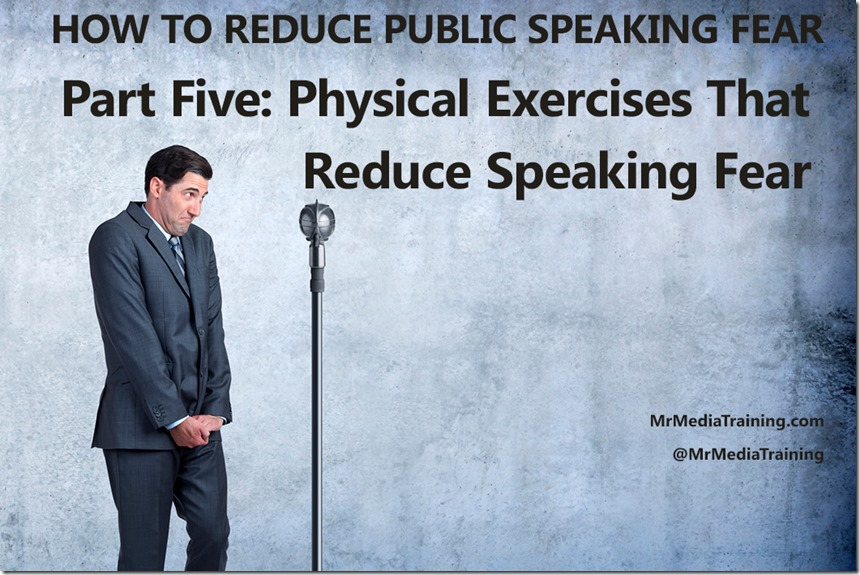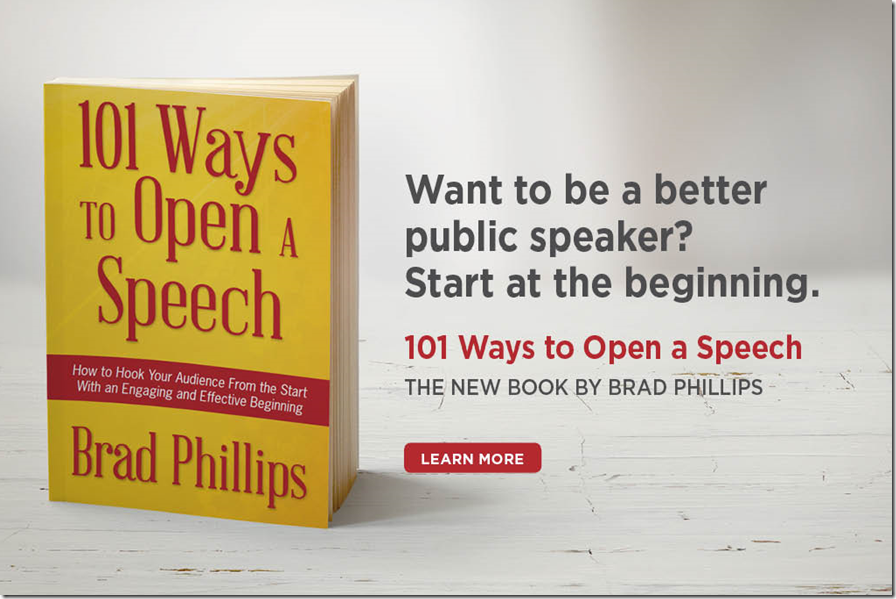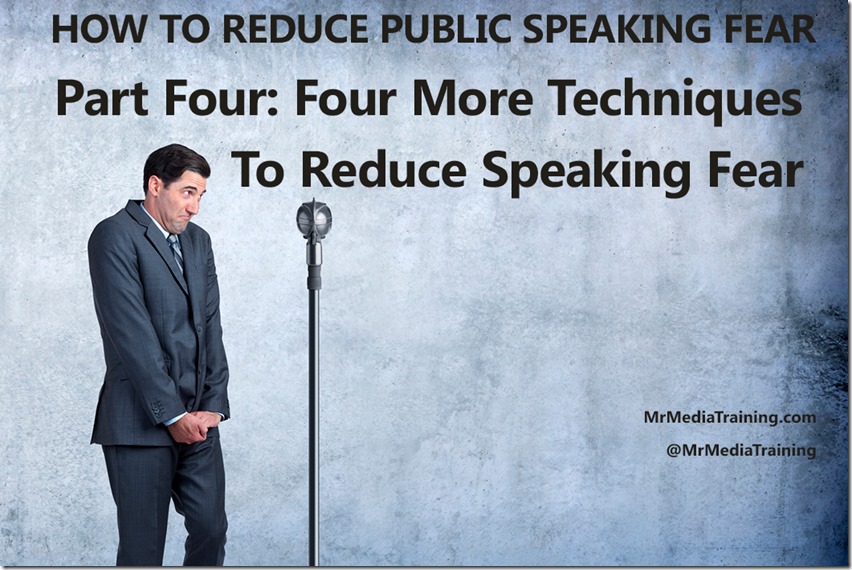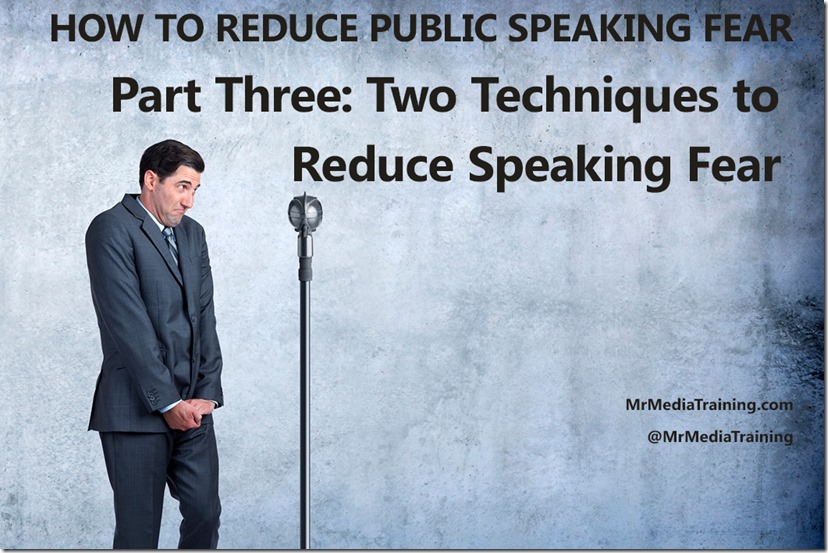Three Physical Exercises To Help Reduce Your Speaking Anxiety
This is the fifth and final post in a five-part series that will help you manage and reduce your fear of public speaking. See the bottom of this post to catch up on the rest of the series.
“The quality of our breath expresses our inner feelings.” – Yoga master T.K.V. Desikachar
1. Deep Breathing
Yoga instructors teach students the ancient practice of conscious breathing. Behavioral therapists help patients reduce anxiety by encouraging them to focus on inhaling and exhaling. Parents soothe crying children by urging them to take a deep breath.
In endeavors ranging from weightlifting and martial arts to opera singing and stage acting, proper breathing is necessary to achieve peak performance. And although you probably know that intuitively, it’s worth asking: When was the last time you focused on breathing before stepping in front of an audience?
Most of us likely spend more time each day thinking about the clothes we’ll wear than the manner in which we’re breathing. It’s understandable why we place breathing on autopilot; doing so frees our brainpower to focus on the myriad decisions we face each day. But operating without awareness can come at a steep cost to our physical and mental health.
In her book Breathe: The Simple, Revolutionary 14-Day Program to Improve Your Mental and Physical Health, psychologist Belisa Vranich writes, “You can live taking in hamster-size breaths, but you’ll suffer, your sleep will suffer and so will your concentration, feeling of balance, and ability to perform. You’ll be alive, but not a very happy hamster.”
The Harvard Medical School explains the impacts of non-ideal breathing patterns and benefits of improved ones: “Shallow breathing limits the diaphragm’s range of motion. The lowest part of the lungs doesn’t get a full share of oxygenated air. That can make you feel short of breath and anxious. Deep abdominal breathing encourages full oxygen exchange—that is, the beneficial trade of incoming oxygen for outgoing carbon dioxide. Not surprisingly, it can slow the heartbeat and lower or stabilize blood pressure.”
Longer breaths can also help reduce anxiety. The average adult’s respiratory rate is somewhere between 12-18 breaths per minute, but the ideal rate is closer to five, say psychiatrists Richard P. Brown and Patricia L. Gerbarg in their book The Healing Power of the Breath. They recommend a technique called “Coherent Breathing,” which uses equal-length inhales and exhales. One variation of the exercise is as follows:
- Sit upright in a chair. Release the tension in your muscles.
- Breathe in through your nose gently and slowly for six seconds. Your belly should expand as you inhale. While learning this exercise, place your hand on your belly to make sure your hand moves outward with your breath.
- Breathe out through your nose gently and slowly for six seconds. Your belly should empty as much possible during your exhale.
- Continue to use this breathing pattern for 10-15 minutes.
- If the exercise feels too difficult at first, begin with a count of two seconds for inhaling and exhaling, then build up to three, then four, then five.
There are hundreds of other deep breathing exercises. You can find many variations, with video tutorials, online (search for deep breathing, diaphragmatic breathing, and/or belly breathing). Some exercises are performed while standing, seated, and lying down; some emphasize slow breathing over deep breathing; some recommend longer exhales than inhales; some suggest different physical postures; others pair breathing with visualizations. Despite the plethora of options, almost all of them share a focus on slower and fuller breathing.
Experiment with different exercises and begin practicing your favorite regularly to gain familiarity and comfort with it. On the speaking day, do the exercise several times, including immediately before your presentation. The people seated around you won’t notice your quiet breathing exercise as you’re about to approach center stage—but your body will.
2. Progressive Muscle Relaxation
Progressive Muscle Relaxation combines deep breathing with flexing—then releasing—your muscles from head to toe (or, if you wish, toe to head).
- Begin by sitting straight up or lying down and resting your hands on your lap or at your sides. Start your deep breathing exercise, focusing on gently inhaling and exhaling through your nose. Release the tension in your muscles.
- Flex your forehead for five seconds as you slowly inhale.
- Keep it flexed and hold your breath for a few seconds.
- Unflex quickly and exhale slowly through your mouth or nose.
- Pause for 10 seconds as you focus on how relaxed your forehead feels. Keep releasing the tension in your forehead and continue your deep breathing.
- Flex each subsequent muscle, one at a time, using steps 2-5. Flex your eyes by clenching them closed; then your mouth (smile widely and tense your cheeks); your neck; shoulders (lift them up toward your neck); upper back; chest; arms, wrists, and hands (one at a time); abs; buttocks; and upper legs, lower legs, feet, and toes (one at a time).
- Finish with deep breaths or repeat the exercise.
You can find several free audio and video narrations online to guide you through this exercise.
3. Physical Exercise
On presentation days, many speakers maintain a ritual of a morning run or strenuous workout to “burn off the nerves,” redirect their energy, and benefit from the so-called “runner’s high.”
In Exercise for Mood and Anxiety: Proven Strategies for Overcoming Depression and Enhancing Well-Being, Boston University’s Michael W. Otto and the University of Texas at Austin’s Jasper Smits, both psychology professors, provide ample evidence for the mood-enhancing benefits of exercise. They cite several studies that establish a link between regular exercise and lower levels of depression or anxiety disorders.
Fortunately, you don’t have to run an eight-minute mile to benefit from the anxiety-reduction properties of physical exercise. Moderate exercise can have an outsize impact on containing your anxiety—and while a single workout isn’t going to be a complete cure for a profound case of nerves, it can provide an immediate and meaningful boost. “Researchers have found that the immediate effects of exercise on mood and anxiety tend to be greater among people who have high anxiety or negative mood levels in general,” Otto and Smits say.
In this and the preceding four lessons, you’ve read many different ways to help manage your speaking anxiety. I encourage you to try several of them, remaining mindful that your goal isn’t to eliminate speaking anxiety, but rather to more effectively manage it. I’m confident that you can take meaningful strides in your effort to reduce your fear—and, as your do, encourage you to remember these four words: Be kind to yourself!
Note: This post is not a substitute for medical advice. Please consult a physician if you have questions about these exercises.
Our Fear of Public Speaking Series
Part One: Introduction to Public Speaking Fear
Part Two: The Public Speaking Mind-Body Connection
Part Three: Two Ways To Reduce Public Speaking Fear
Part Four: Four More Ways To Reduce Public Speaking Fear
Part Five: This Post





